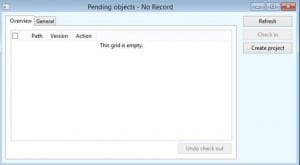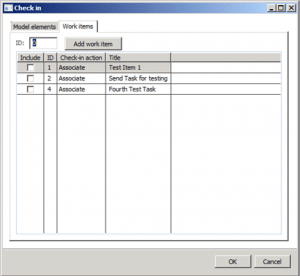The Code
Profiler measures the execution time of individual lines of code. Use this tool
to find performance bottlenecks and to help understand code that was developed
by others.
How to use Code Profiler
Ø Click Tools > Code profiler to open the Code Profiler tool.
Ø Navigate to the
functionality that you want to test. For example, navigate to the appropriate
place in the Navigation
Pane.
Ø To limit the results
displayed, check the Trace
depth enabled check box, and then type the
number of levels that you want to be displayed in the results.
Ø Click Start. Use the
functionality you want to test. When testing is complete, click Stop. The system now
saves all logged data to the database. This might take quite some time because
a database record is created for each executed line of code.
Ø Write a description
of your code profile in the Summary dialog.
Do not select the Calculate line total check
box. If you need to calculate line totals later, use the Profile
runs form.
Ø Click OK.
The Profiler runs form opens. This enables you to view data collected by
the profiler.
To view the data that is collected by the code profiler
Ø Click Profiler runs.
Ø Select the data set that you want to view.
Ø Click the Statistics tab to
view a summary of the information for the code profile.
Ø Click one of the following four buttons to
view more detailed data:
Call tree – Shows you a hierarchy of method calls
Profile lines – Shows a list of all lines of code that
are executed, making it easy to find which lines of code took the longest to
execute.
Traverse – Shows a sorted list of the time that was spent in all
methods, combined with the sum of the time spent in sub calls, plus the sum of
the time spent in the method, depending on the origin of the call.
Totals – Allows you to select summaries of the time spent in
lines, methods, and objects.
The Call tree, Profile
lines, and Traverse forms show raw data. Aggregated data
is available in the Totals options.
Using code Profiler in X++
As an
alternative to the graphical user interface,
you can control the code profiler directly from your X++ code. For this purpose
there are two macros:
·
#Profilebegin()
·
#ProfileEnd
These
two macros have to be in the same level in a method.
static void codeProfilerTest()
{
int
i, j;
;
#profileBegin("test")
for(i=1;
i<=10; i++)
{
j+= i*i;
}
info(strfmt("%1",j));
#profileEnd
}
You
will then have to find the collected data under Tools > Code profiler > Profiler runs, and process the data yourself by selecting Totals > Calculate sum.


